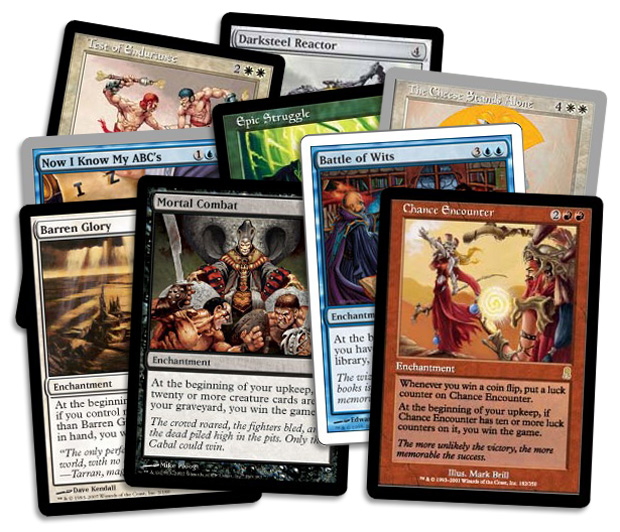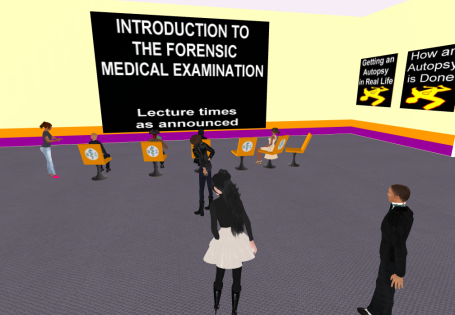This thing that I have become so passionate about goes by many names. Games-based learning, quest-based learning, gamification, etc. etc. etc. Some of these names have positive connotations and at least one of them has some very, very negative connotations. I tend to use games-based learning and gamification interchangeably and I often tag posts that focus on games-based learning with the gamification tag, even though I don’t consider what I am doing gamification. I suppose I do this because teachers who are interested in one are often also interested in the other and, like me, may use one or the other depending on the course and the students. I have found, though, that I am moving farther and farther away from gamification and closer and closer towards turning my courses into full-fledged games. Hence, I see what I am doing as games-based learning; while my students aren’t playing video games (which typically characterizes GBL), they are playing a game; the game just happens to be the class. Sometimes this game involves role playing face-to-face or via a virtual environment like Second Life; sometimes it involves completing quests to unlock new quests; sometimes the role-play and the questing center around a shared narrative that the players create via their decisions and actions; and it always involves communicating and collaborating with other players via social media. If you add all of those things up, I think that there’s a pretty good argument to be made that what I am really doing–and what I want to do better–is turning learning into a pervasive game.
In Pervasive Games: Theory and Design, Markus Montola defines a pervasive game as “a game that has one or more salient features that expand the contractual magic circle of play spatially, temporally, or socially.” In other words:
In pervasive games, the magic circle is expanded in one or more ways: The game no longer takes place in certain times or certain places, and the participants are no longer certain. Pervasive games pervade, bend, and blur the traditional boundaries of game, bleeding from the domain of the game to the domain of the ordinary.
There are some common characteristics of pervasive games that illustrate this expansion: the whole world becomes a playground (players’ everyday environments become the game space), there is no such thing as a temporally-defined play session (play can and does occur at any time), and playing with outsiders (people who happen to be present in the game space during game play can become inadvertent and unsuspecting NPC’s). To further illustrate what a pervasive game is, I’ll use the example of Google’s Ingress. In Ingress, the player takes on the role of the game token (a flesh avatar) and their phone takes on the role of a weapon within the game. The objective of the game is to use their phone’s GPS to locate and “hack” portals of energy that are leaking out into the surrounding environment. These portals are located in the player’s local community: historical landmarks, governmental buildings, art installations, etc. The player is competing to claim as many portals as possible for their faction (either the Enlightenment or the Resistance) before players aligned with the other faction can do so. There is also a narrative thread that provides meaning to the energy, the portals, and the player’s role in and motivation for capturing them that the player can discover by locating and solving puzzles via websites, social media, and the portals themselves. The game is much more complicated than my summary suggests and I think that this video documenting one particular world-wide Ingress “operation” can do a better job of illustrating the capacity for pervasive gaming to engage and motivate:
So, what does this have to do with learning? If we consider the rhetoric that surrounds education right now, we can clearly see the connection. The new mantra of education is “21st Century Skills.” What specifically characterizes 21st Century Skills is debatable and has not been exactly pinned down. But what is clear is that the majority of schools–both K12 and higher education institutions–are not doing a very good job of helping their students attain these skills. We know that at least some of these skills include abilities such as problem-solving, disciplinary flexibility, adaptability, networking, collaboration and cooperation, technological adeptness, creativity, critical and analytical reading and thinking, and the willingness to be a lifelong learner. These skills are essential to surviving and thriving in the new information-based economy–one characterized by frequent career changes, a technology-dependent infrastructure, and the need for innovation and creative problem-solving within a global context. The old-school (pardon the pun) method of education just does not teach these kinds of skills or prepare our students for this kind of economy. In order to develop this new kind of mindset, we need to encourage our students to recognize and embrace learning opportunities both inside and outside of the classroom; to make connections between disciplines and between those disciplines and their passions; to transfer their social networking and technology skills from Facebook, YouTube, and video games to the classroom and, eventually, their careers; and to apply what they’ve learned about collaboration and cooperation from MMORPG’s and ARG’s to problem-based learning scenarios and service learning projects. So, in many ways we really want learning to be like a pervasive game: always “on;” expanded beyond a single physical space or time frame; encouraging connections across multiple platforms and environments; triggering and integrating multiple ways of thinking, interpreting, learning, problem-solving, and acting; and requiring creative interactions with both other people and the local environment.
I don’t think that you necessarily have to turn your class into a pervasive game in order to achieve this kind of learning. But I think that by studying pervasive games and how they work to engage and motivate players, we can figure out how to better prepare our students to adopt pervasive learning attitudes and habits. Here are some techniques outlined in Pervasive Games: Theory and Design that I think teachers could co-opt and integrate in order to encourage pervasive learning:
- integrate authentic physical space and physical artifacts as game content to encourage players to interact with their local community in new and exploratory ways; use the community’s ambience and history to make it part of the game; use the game to direct players to interesting locations at interesting times
- make the player’s body a de facto game token
- integrate virtual and augmented reality to mix the physical and virtual game content
- spatial expansion is about discovery and changing perception–> expose the unseen and make the familiar strange
- temporal expansion makes play available at all times–> the game is always “on”
- the rules of the game can change over time to scaffold play and keep players’ interest
- design tangible experiences–> the player is doing something incredible through their own efforts that they’ll want to talk about afterwards
- surpass expectations–> establish expectations then squash them with an unexpected maneuver
- escalate previous experiences
- link task structures so that success in one challenge directly influences the chances of success in another
- force collaboration through interdependence
- make players do things for real (find a book, scale a wall, create a chemical reaction, navigate a landscape)
- foster networking to ramp up collective knowledge
- create the 360 degree illusion–> indexical environment (real space), indexical activity (real action), immersive role-play
- this is not a game–> use ordinary reality as a sourcebook
- sustain a responsive game world–> lots and lots of interactive feedback (between game master and players and players and players)
- the goal is for a collective story to emerge; the players tell the story based on their communal experiences; you shouldn’t have to tell the story to them
- foster arenas where the story can emerge–> discussion forums, debrief party, etc.
- design for sensory immersion–> audiovisual, 3-D, stereophonic surroundings
- design for challenge-based immersion–> create a satisfying balance of challenges and abilities
- design for imaginative immersion–> becoming absorbed with the stories and worlds and feeling for or identifying with a game character
- create alternate endings and allow the players to determine the true ending
I’ll leave how to apply these strategies to a learning context up to your imagination. But I believe that they provide some very fertile ground for transforming learning for our students in the same ways that pervasive games have transformed what it means to play a game.
Dave Szulborski said of Alternate Reality Games–a type of pervasive game–that “[i]n an ARG, the goal is not to immerse the player in the artificial world of the game; instead, a successful game immerses the world of the game into the everyday life of the player.” I believe that in education, the goal is not to immerse the learner in the artificial world of school, but instead to immerse learning into the everyday life of the learner. Pervasive games offer a set of guiding principles that could very well help us do just that.







